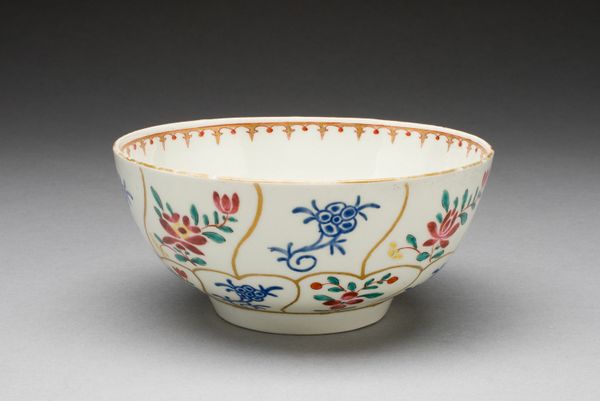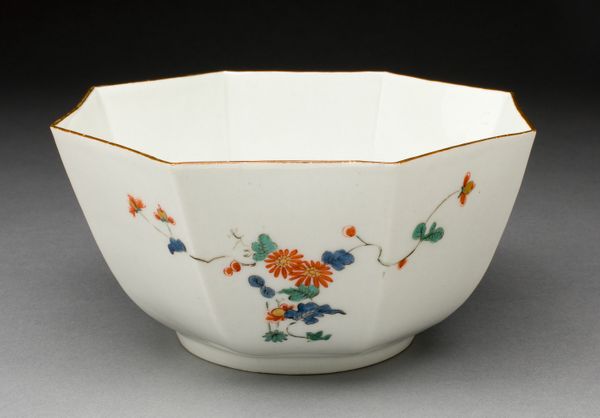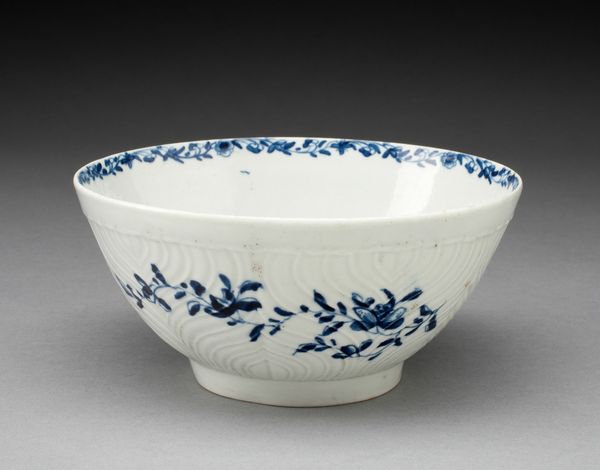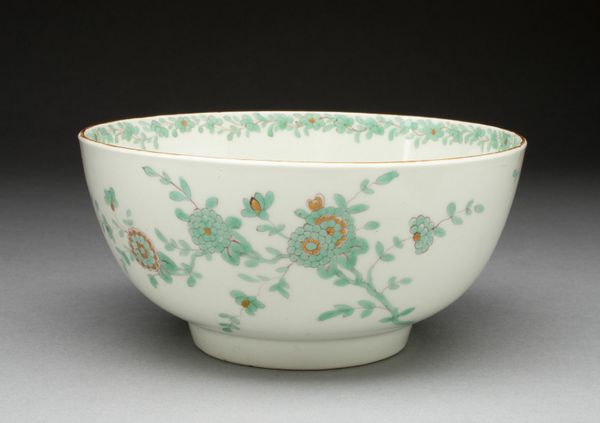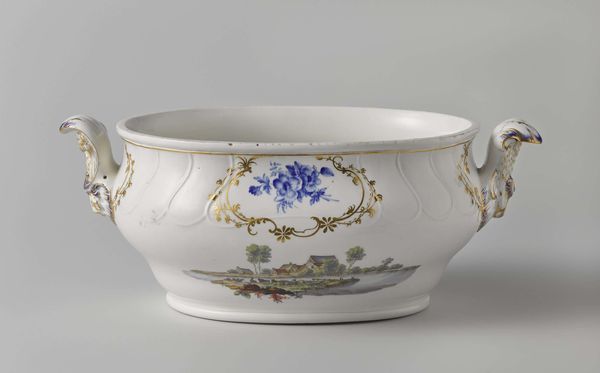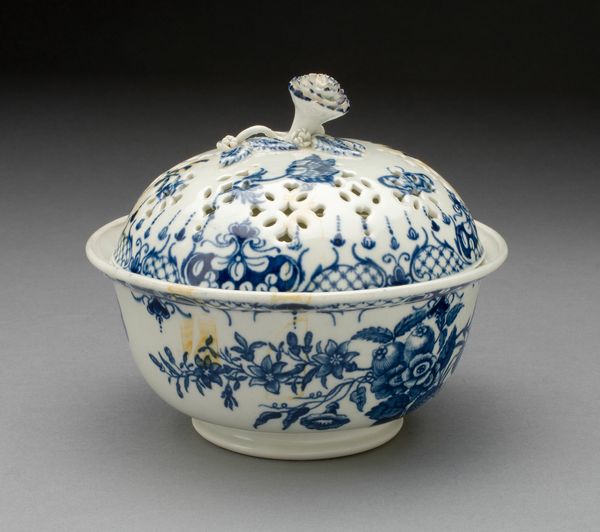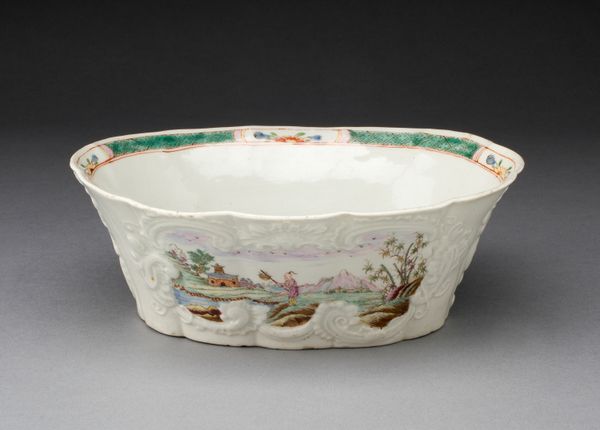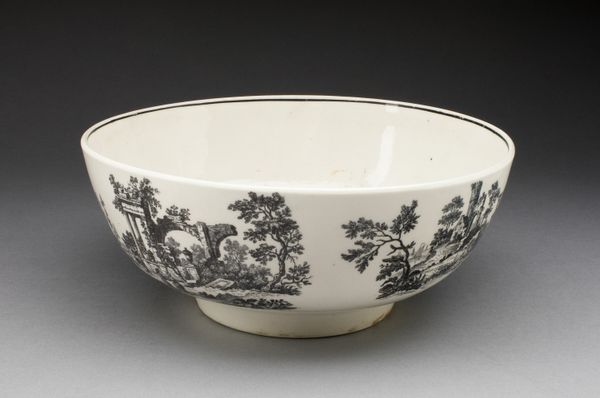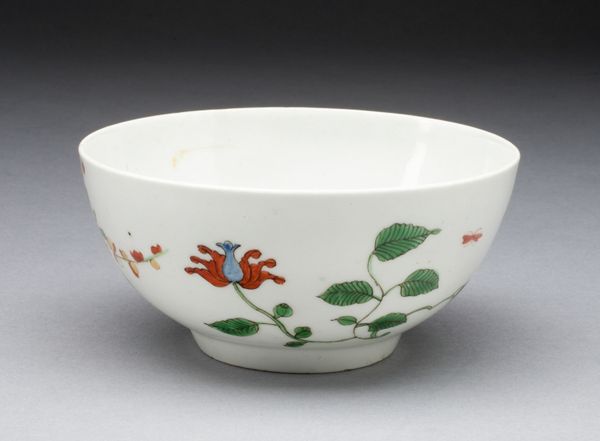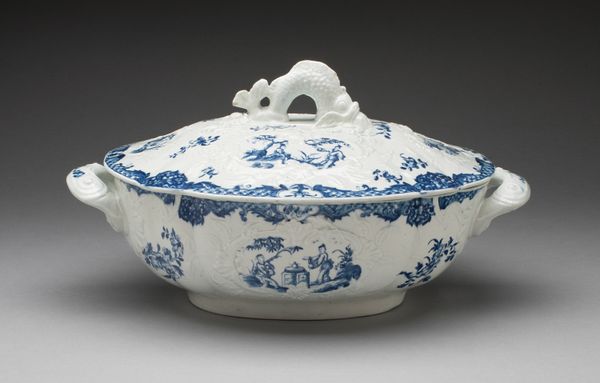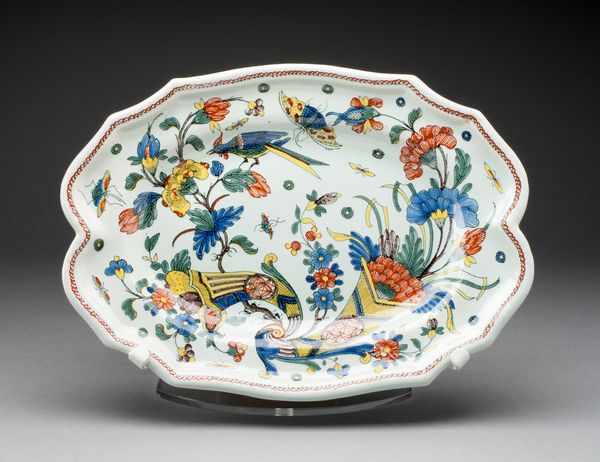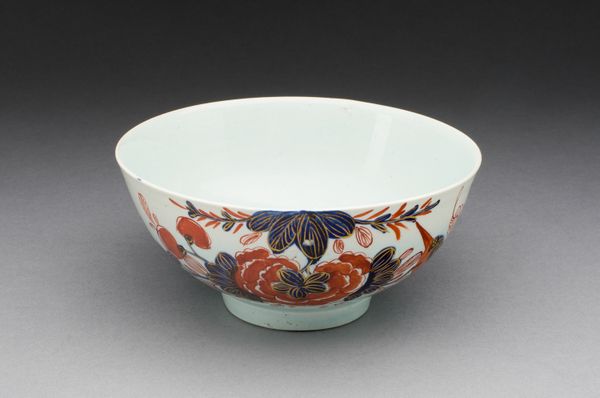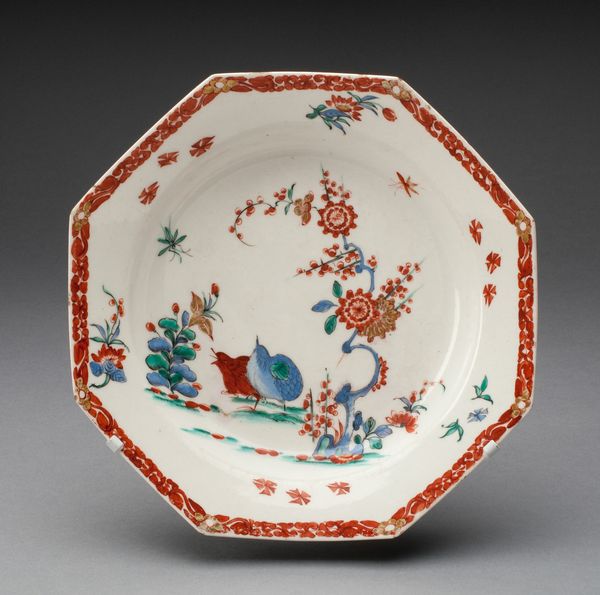
ceramic, porcelain
#
asian-art
#
ceramic
#
porcelain
#
ceramic
#
decorative-art
Dimensions: H. 7 cm (2 3/4 in.); diam. 14.9 cm (5 7/8 in.)
Copyright: Public Domain
Here is a slop bowl made by the Worcester Royal Porcelain Company. Though the date of its making is unknown, it tells a rich story about trade, class, and global connections in the 18th and 19th centuries. These bowls were used to discard tea leaves and dregs during tea ceremonies; their existence speaks to the rituals of tea drinking that became fashionable amongst the upper classes. The bowl's porcelain material and its Chinoiserie-style decoration –notice the stylized flowers and landscapes–reflect the influence of Asian aesthetics on European tastes. But this was not a one-way exchange; European traders and companies like the East India Company, played a crucial role in bringing porcelain and tea to Europe, often through exploitative colonial practices. This bowl, therefore, represents a complex interplay of cultural exchange, economic power, and colonial history. When you look at its delicate design, consider the global forces that shaped its creation and use.
Comments
No comments
Be the first to comment and join the conversation on the ultimate creative platform.
